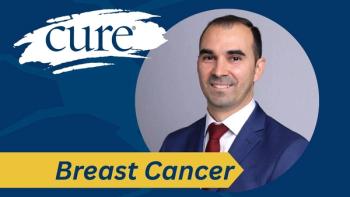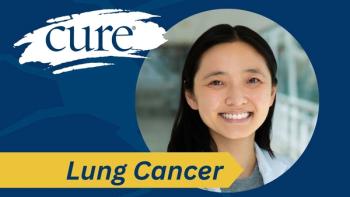
FDA Approval of Modeyso For Glioma May Lead to Combination Therapies

Key Takeaways
- Modeyso's approval offers a new treatment for diffuse midline glioma with H3 K27M mutation, a previously untreatable condition beyond radiation.
- The drug is well-tolerated, with minimal side effects, making it suitable for combination therapies to enhance treatment efficacy.
The FDA’s accelerated approval of Modeyso for diffuse midline glioma with an H3 K27M mutation sets the stage for more treatment advancements.
The U.S. Food and Drug Administration (FDA) granted accelerated approval to Modeyso (dordaviprone) for patients with diffuse midline glioma with an H3 K27M mutation, a move which one expert explained could set the stage for even more treatment advancements in the future.
“Now that this drug is available, potentially, you could think of combination therapies and other novel ways to try to build on this step,” Dr. Patrick Wen told CURE in an interview. “The drug is very well tolerated; most targeted therapies are not that easy for patients to take, this one is actually very easy. You take it once a week, and there can be some fatigue, nausea, headaches, but most of the time, patients don't feel bad on it at all, and a lot of them won't have side effects that they'll tell you about. So hopefully this will allow the drug to be fairly easily combined with other drugs, and that will build on these preliminary steps
Wen, is the Director of the Center for Neuro-Oncology at Dana-Farber Cancer Institute and Professor of Neurology at Harvard Medical School in Boston, and was the senior author of a study published in the Journal of Clinical Oncology that found monotherapy with Modeyso to be well-tolerated, with durable and clinically meaningful effectiveness among patients with recurrent H3 K27M-mutant diffuse midline glioma.
Wen spoke with CURE about the significance of the approval and what comes next.
CURE: What should be the big takeaway from the FDA approval of Modeyso?
Wen: Of all the types of gliomas, this is probably the hardest one to treat. Since it's in the midline, it's not resectable by surgery, and patients usually don't respond to standard chemotherapies. All these patients have is radiation, which works for a number of months, and then the tumor recurs. As a result, most patients have a life expectancy of about a year or so. It's a terrible disease that occurs in young adults and often in children. Until this approval, there was no treatment for these patients besides radiation.
This approval is based on a study that isn't for all diffuse midline glioma patients with an H3 K27M mutation. It was done primarily for patients who had thalamic gliomas, and mainly in adults. This is because it is very hard to tell if a drug is working in these tumors. For instance, the more common diffuse intrinsic pontine gliomas (DIPG) are not enhancing, so it's very hard to measure the tumor. The FDA wanted a set of patients in whom they could assess the response rate. That's why this study looked at 50 patients with a measurable tumor; they were not DIPG patients or spinal cord patients. The approval was based on the response rate and the durability of the response.
So, it's definitely an important step forward in a field where nothing has been approved, but it only benefits a subset of patients. We still need a lot of work to improve the outcomes. However, now that this drug is available, we could potentially think of combination therapies and other novel ways to build on this step. The drug is very well tolerated—most targeted therapies are not that easy for patients to take, but this one is actually very easy. You take it once a week, and there can be some fatigue, nausea, or headaches, but most of the time, patients don't feel bad on it at all, and a lot of them won't have side effects they will tell you about. Hopefully, this will allow the drug to be fairly easily combined with other drugs, which will build on these preliminary steps.
How does Modeyso work to fight cancer?
It's thought to work in two ways. One is that it blocks some receptors that dopamine receptors two, two and three. By blocking it, it slows down tumor growth. It also stimulates a different receptor that affects the metabolism of the tumor cells, and by doing so, causes the tumor cells to negotiate changes that make it more likely to die. So, that's by stimulating something called ClpP and mitochondria.
Both those mechanisms are thought to be in play. It's not entirely clear which one is the more important one.
With this treatment option on the table, what are unmet needs that still remain for patients with glioma?
It was based on the study for measurable disease. It's mainly thalamic gliomas, which are higher up in the brain stem. We don't have as much information about the effectiveness for the diffuse intrinsic quantum glioma, which are the really devastating tumors in children.
The company may have more information on that, but I am not aware of the final data from because there are several ongoing trials. It's really for the thalamic illness that this therapy is helpful. Hopefully it will be somewhat helpful for the DIPGs also, but we don't have as much information.
What is next for Modeyso, in terms of research?
This was an accelerated approval by the FDA, so it still needs final approval, and the company, Jazz, has an ongoing phase 3 trial looking at this drug in newly diagnosed patients with diffuse midline glioma, so hopefully that trial, when it's completed, will confirm these preliminary results and lead to full approval of the drug. So that's still pending, that trial is going on outside the U.S. With the approval of this drug, I think we can look forward to combination therapies with other agents that might be useful for these tumors, and so I think that will be an important step forward.
It's very hard to work with two drugs that are not approved, but if one of them is approved, it makes it easier to do these studies.
References
- “FDA grants accelerated approval to dordaviprone for diffuse midline glioma,” by the U.S. FDA. News release. Aug. 6., 2025. https://www.fda.gov/drugs/resources-information-approved-drugs/fda-grants-accelerated-approval-dordaviprone-diffuse-midline-glioma
- “ONC201 (Dordaviprone) in Recurrent H3 K27M-Mutant Diffuse Midline Glioma,” by Dr. Isabel Arrillaga-Romany. The Journal of Clinical Oncology. May 1, 2024.
- “FDA Approval of Modeyso ‘Important Step Forward’ For Patients with Glioma,” CURE, Aug. 15, 2025; https://www.curetoday.com/view/fda-approval-of-modeyso-important-step-forward-for-patients-with-glioma
- “FDA Approves Modeyso for Patients with Diffuse Midline Glioma,” CURE, Aug. 6, 2025; https://www.curetoday.com/view/fda-approves-modeyso-for-patients-with-diffuse-midline-glioma
For more news on cancer updates, research and education,




